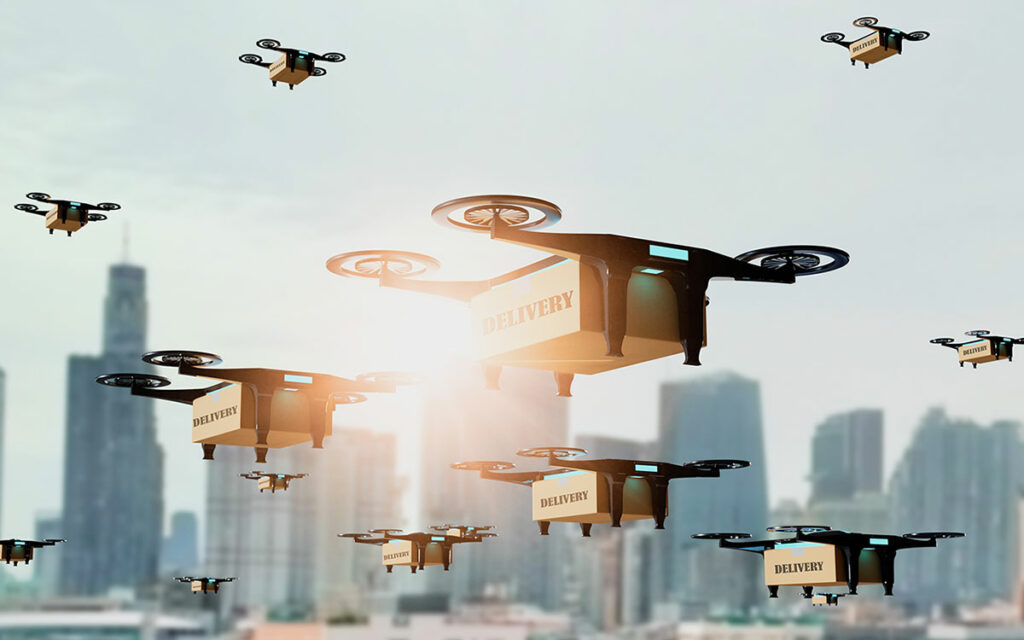Drone Delivery Dreams Could Turn into Supply Chain Nightmares

Look, up in the sky! It’s a bird. It’s a plane. It’s an Amazon order?
While drones are still something of a novelty, that is likely to change in the coming years. According to Research and Markets, the global “Drones-As -A-Service market is expected to grow more than $355 billion by 2032, boasting a growth rate of more than 36% over the next decade.
If those figures are mind-boggling, think about what that means in terms of the number of drones operating in the skies above our heads.
The idea of packages delivered by drones sounds cute in the abstract. It fits in the narrative of disruptive entrepreneurship, finding new ways to do old things, with an added dollop of technological flair. But what happens when multiple drone deliveries converge on residential neighborhoods, clogging the skies with unmanned vehicles following their own flight paths. If this isn’t a recipe for chaos, then the word no longer has any meaning in the English language.
But package delivery isn’t the only function in the Drones-As-A-Service sector. In addition to aerial photography, scientific research, spraying and seeding for agricultural applications as well as surveying and mapping, surveillance and monitoring is expected to be one of the growth areas for commercial drone use. And that is just what people have thought to use drones for so far. As the commercial drone market grows, more and more companies will find more and more ways to use the technology. And not all of those uses will necessarily be safe or welcome.
This shouldn’t come as a surprise. The rush to implement new technologies in a commercial setting is a pattern that’s been repeated again and again. And that means lots of investment dollars poured into start-ups, new drone technologies competing for vendor attention and the inevitable loss of jobs that accompanies technological advances. All to get someone’s package to them a little faster.
The love affair society has with technology is on the whole a good thing. Welcoming new and better ways of doing things and integrating labor-saving devices into our daily routines has given people more time for other endeavors and made us all more productive. But a blind acceptance of any and every new technology simply because it is new focuses attention on the wrong things. New is not always better. Technology doesn’t always make things better, or cheaper or even more available.
The idea that technological change is inevitable is closely aligned with the notion that advances in science are always a good thing. And that reliance on technology to solve society’s problems is not only short-sighted, it absolves society of any responsibility for creating those problems in the first place.
Sure, drones can deliver packages and help with mapmaking and agriculture. But just because they can doesn’t necessarily mean it’s a good idea. It’s one thing to be disruptive in an effort to meet a consumer need or solve a problem. It’s quite another to be disruptive just to be disruptive.






